黒谷和紙 黒谷和紙協同組合
KUROTANI-WASHIKUROTANI PAPER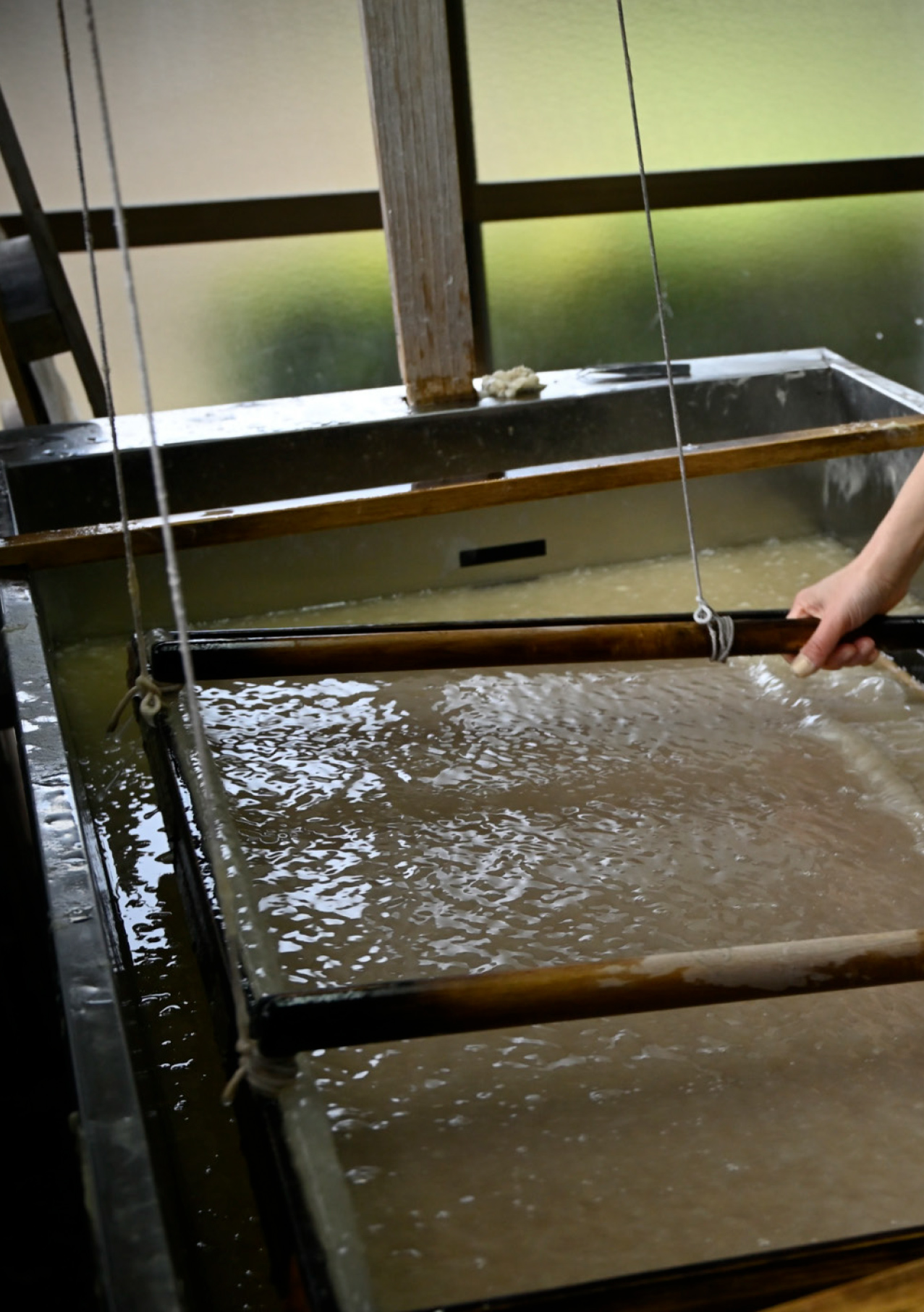 1
1
- 11名の職人が現在も手漉き和紙を守り続けている。寒ければ寒いほどよい紙が漉けるという。
古くから伝わる手漉き和紙の産地は日本全国に残されていますが、京都府では、京都市街中心部から車で1時間30分ほどの山間にある綾部市黒谷町と八代町およびその周辺で技術が継承されています。現在も、原料となる楮の収穫から紙漉き、染色や加工までが一貫して行われています。丈夫で破れにくく、美しい光沢をもつ黒谷和紙は、かつては京の都に近いという地域柄、京呉服の値札や渋紙、きものや帯を包むたとう紙などの生産を担い、また提灯や和傘、障子紙、包装紙などとして長く使われてきました。さらには寺社の障子やふすま紙としても重用されています。加えて、書家の宮本竹逕や、アメリカの画家ジャスパー・ジョーンズなどが作品づくりに使用したことでも知られています。現在は、こうした用途のほかにも、使い込むほどにシワとツヤが増す風合いと丈夫さを生かしたトートバッグやポーチ、クッションなども生産されています。
Handmade Japanese paper dates from ancient times and it has been produced in various locations throughout the country. In Kyoto Prefecture, handmade paper is a specialty of Kurotani-chō, Ayabe-shi and Yatsushiro-chō, which are located in the mountains about an hour and a half by car from the center of Kyoto. Here the art of paper making, dyeing and processing, along with the harvesting of raw materials such as mulberry, continue to be carried out. Kurotani washi paper is highly prized for its durability, resistance to tearing and beautiful luster. Due to Kurotani’s proximity to Kyoto, this paper has long been used for kimono price tags, astringent paper, kimono and obi wrapping paper, and also for lanterns, Japanese umbrellas, wrapping paper and more. It has graced the sliding doors and screens (shoji and fusuma) in temples and shrines as well as the artworks of calligraphers such as Chikukei Miyamoto and the American painter Jasper Johns. In addition, Kurotani paper’s durability makes it an attractive material for tote bags, pouches and cushions, taking advantage of a sheen and texture which becomes even more attractive with use.
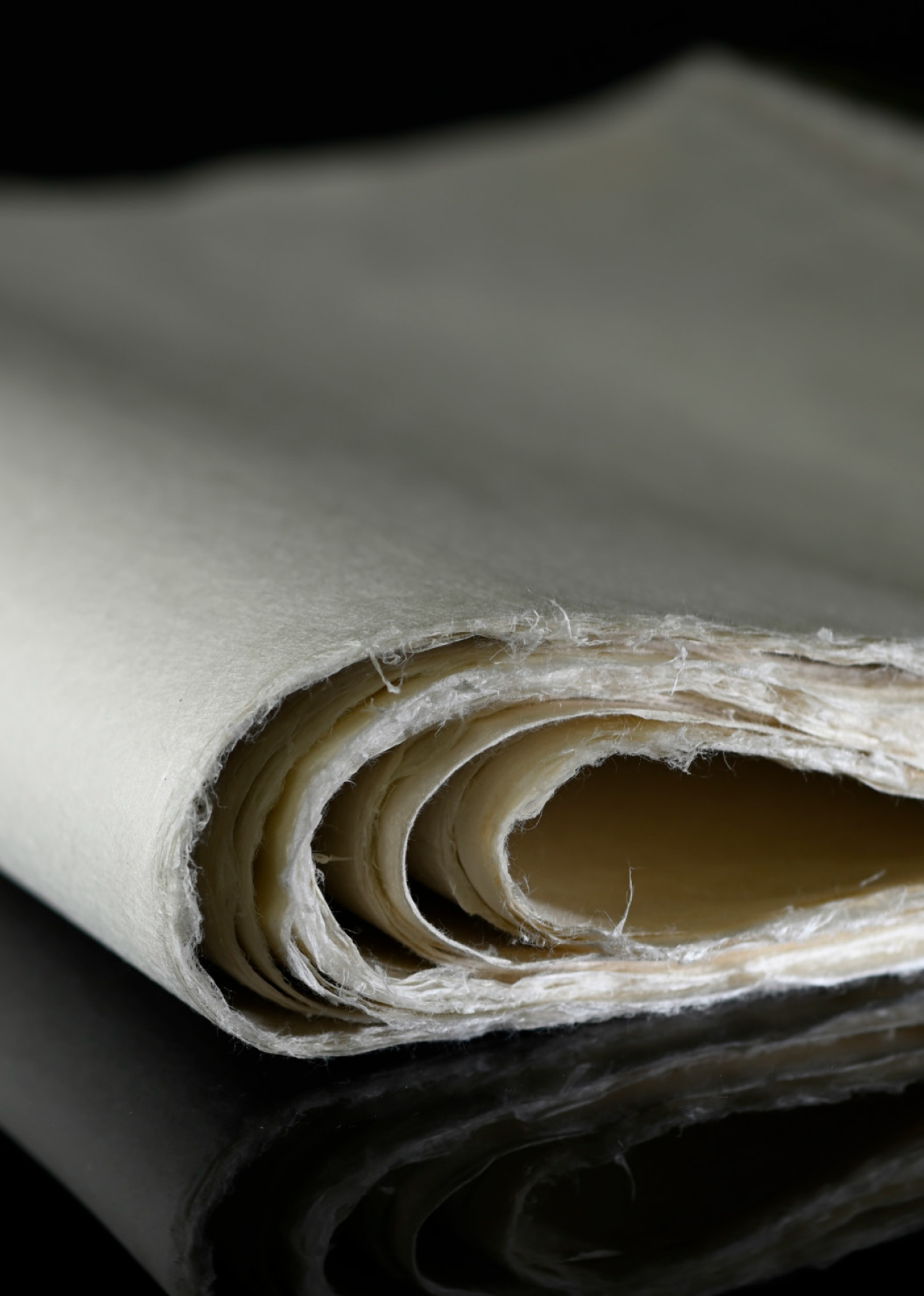 2
2
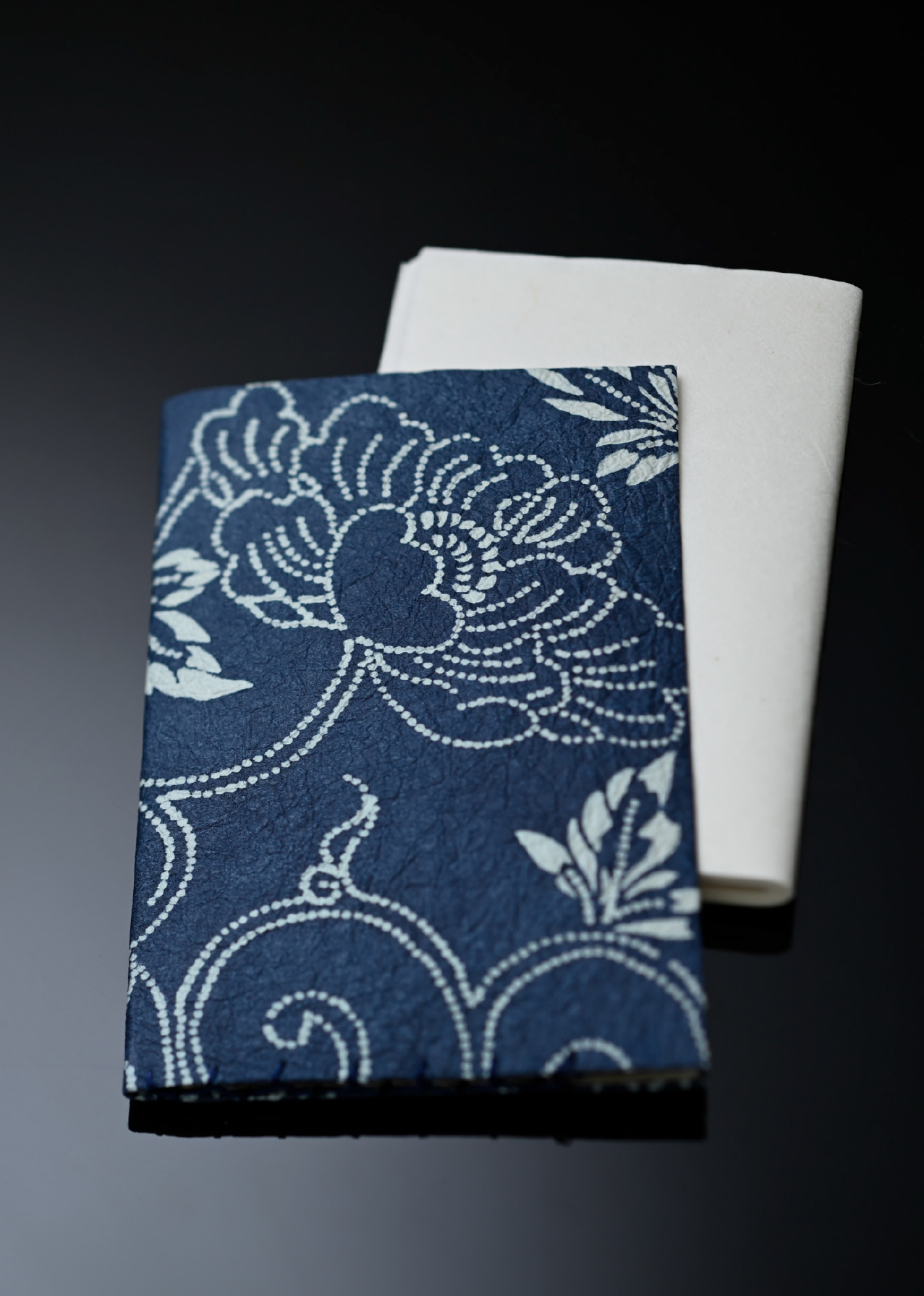 3
3
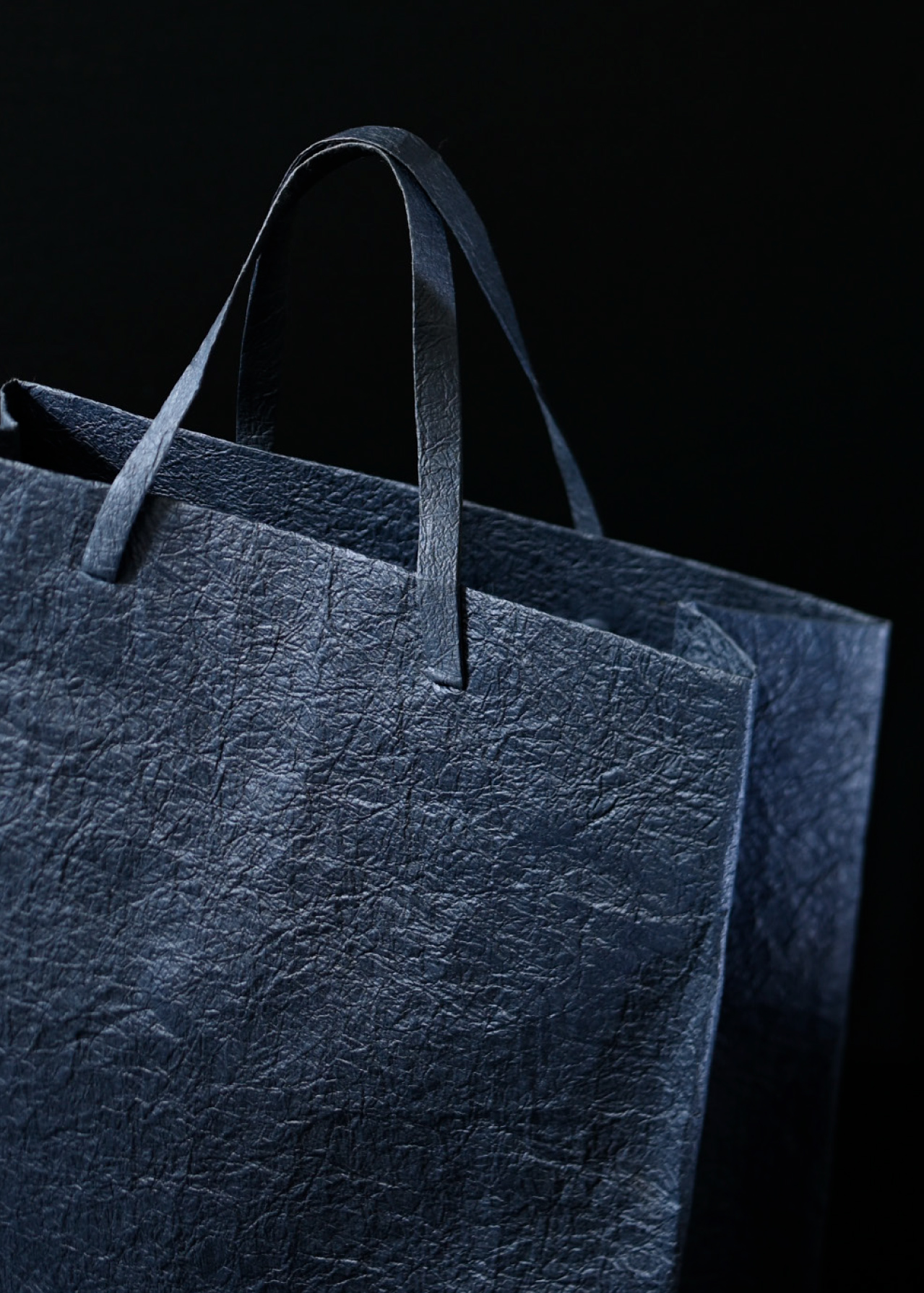 4
4
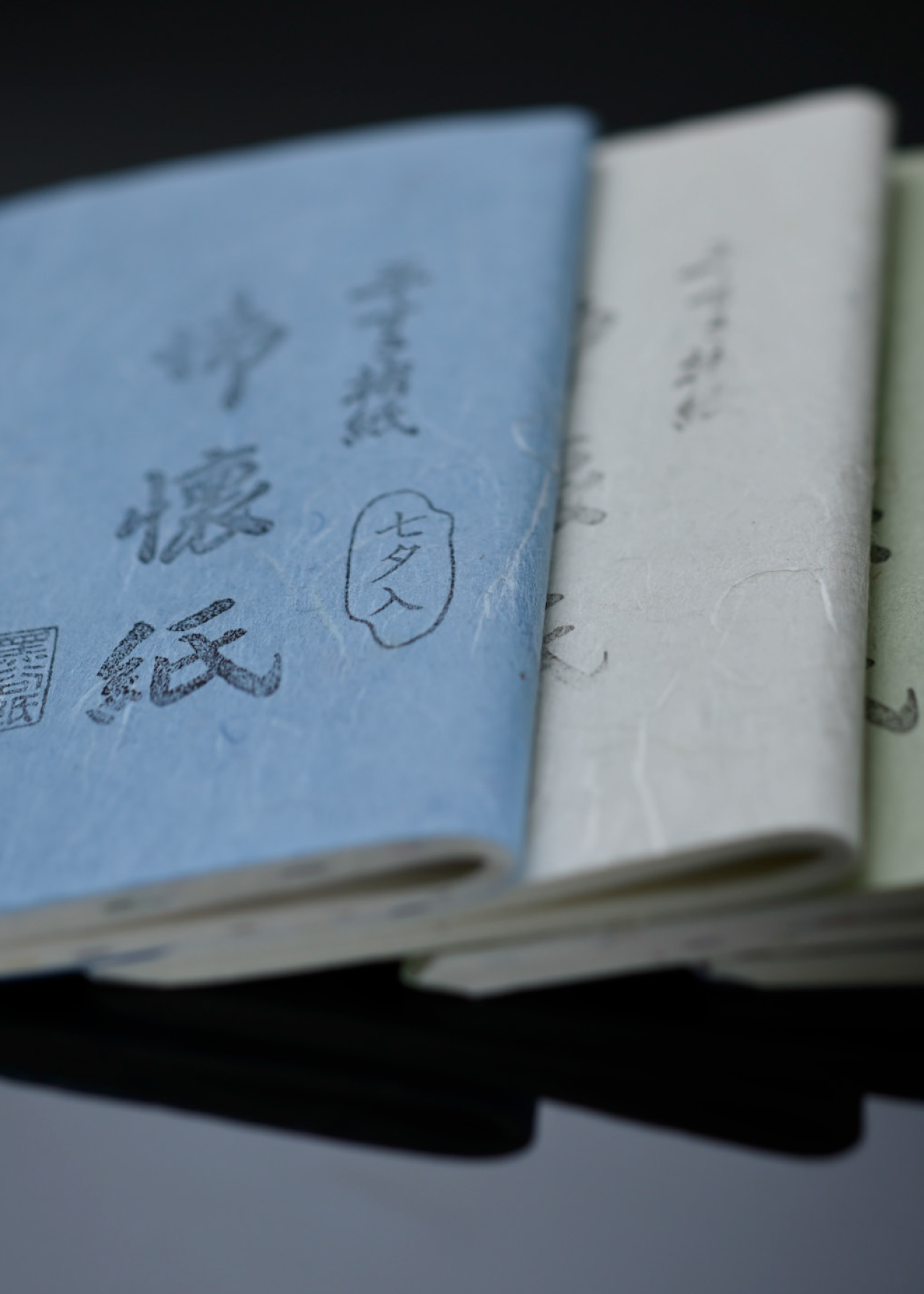 5
5
- : 黒谷和紙は、ルーブル美術館をはじめとする世界中の美術館で修復用紙としても使用されている。
- : 茶席でペーパーナプキンのように使用する懐紙と型染めの懐紙入れ。
- : トートバッグ。布帛同様の丈夫さで、独特のシワとツヤが出る。
- : 懐紙。
(1,2,3,4,5 すべて黒谷和紙協同組合)
1: 11 craftsmen continue to produce handmade Japanese paper. It is said that the colder the paper is, the better it will be made. 2: Kurotani paper is also used as restoration paper at museums around the world, including the Louvre. 3: Kaishi paper (used like a paper napkin in the tea ceremony) with its pattern-dyed container. 4: Tote bag. The cloth is durable and has unique wrinkles and gloss. 5: Kaishi paper. (1,2,3,4,5 Kurotani Washi Cooperative)

